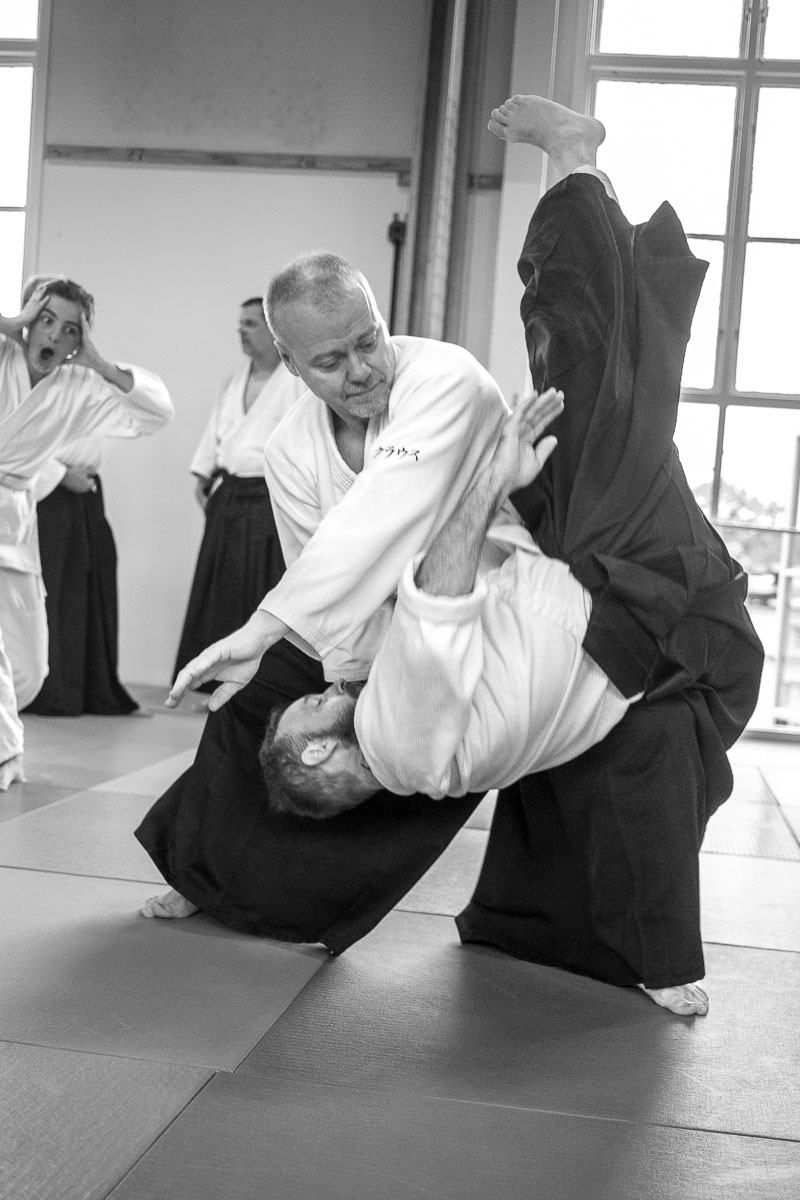The Dojo
Aikido Oberursel stands for open-minded and respectful practice, and for continuous research. We maintain a lively exchange with an international network of friends. This is why we chose the slogan CONNECT ∙ EXCHANGE ∙ DEVELOP. The dojo was founded in 2013, and the first official class was held on 5 January 2014.
In December 2025, the dojo joined the Aikido Föderation Deutschland national association which is recogised by Aikikai Hombu Dojo.
Head of the Dojo

Klaus Messlinger took his first Aikido lesson in 1996. He practises in a number of dojos dedicated to the tradition of Yamaguchi Seigo shihan (1924-1996) and his direct students Endo Seishiro shihan (Saku/Japan) and Christian Tissier shihan (Paris). After having practised a number of years with Ulli Kubetzek (Frankfurt), his most influential teachers today are Jan Nevelius shihan and Jorma Lyly shihan (Stockholm). Klaus holds a 4th dan Aikikai Tokyo.
Klaus sees tradition as a way of "passing on the flame": to him Aikido is a continuing research, a life-long development where everybody needs to discover their own path and their own interpretation of Aikido. In this spirit he regularly visits a large number of international seminars under various teachers.
Klaus finds it exciting to find a reaction in which he takes the attack seriously and at the same time remains calm. He is particularly interested in how he can establish a vigilant connection with his opponent that is not perceived as resistance or manipulation and therefore offers no starting point for violent behaviour: "I adapt to the energy of my opponent and give it a new direction."

Klaus Messlinger, 4th Dan Aikikai; photo: Julia Wagner
It is important for Klaus to understand the principles of the conflict, both physically and mentally. Therefore, a clear technical execution and an inner form that takes the attacker into account holistically complement each other. Very often, the subconscious and instincts are used to influence the balance of the opponent and thus achieve a solution to the conflict.
One of Klaus's particular concerns is to work towards equal space and development opportunities for all genders in Aikido. His goal is to accomplish a balanced ratio, especially among teachers.
The Logo
Our logo is made up of three concentric circles, drawn by hand with ink. The imperfection of the circles stands for the individual path every Aikido practitioner is following in the art. The logo stands for a number of ideas, in particular:
- Tree rings (growth and development)
- Wavelets caused by a drop in the lake (harmonic movement from silence)
- Contour lines of a mountain (perseverance and vision)
- Three reference points of techniques: centre, contact and distance
- A target symbolising concentration and focus on one task at a time
- Resting in oneself and simultaneously being aware of ambient space
- Three ensō symbols from Japanese calligraphy, expressing the moment when the mind is free to let the body create
- From inside out: Why? How? What? (Read Klaus Messlinger's personal answers)
Continue to → FAQ


